When you take a look at all of the devices that people use to browse the Internet these days, there is no device that has seen the growth that the mobile phone continues to see. Take a look at these alarming statistics:
- Searches on mobile phones have increased roughly 400% year after year
- Over 50% of searchers’ purchases were the result of a smartphone search
- Mobile ad spending will increase to $4.39 billion by 2015
The bottom line is that not only are people browsing the Internet more through their mobile devices, but they are also using search engines on their devices to find what they’re looking for. With this growing trend in mobile search, there has never been a better time to begin a PPC campaign for mobile users.
Is mobile PPC right for every business?
The answer of course, depends. There are many questions to ask yourself before you even consider venturing into mobile PPC territory:
- What is the business’ sales cycle like? Is it short? Long?
- How does the business sell to its customers? Over the phone? In a store? Online?
- Is the website responsive to mobile devices?
- What is the business looking to get from its PPC ads?
If you are dealing with a business that has a long sales cycle, no storefront, and a complicated ecommerce store, you might want to put a mobile PPC campaign on hold.
Don’t let this stop you though! A mobile PPC campaign could be a great route for practically any business, even if there are some businesses that are better suited for it than others. What could ultimately make or break you is the preparation and setup. If the right steps aren’t taken in preparing for a mobile PPC campaign, your results may suffer significantly. So how can you ensure that you’re properly prepared to run a mobile PPC campaign?
Preparing for a mobile PPC campaign
If you think you can just duplicate your existing campaigns and target them to mobile devices, you are sorely mistaken. There are a number of things that must be done when preparing a mobile PPC campaign.
Prepare your mobile landing pages
If you are looking to sell to your mobile visitors through your website, you better be bringing them to webpages that are optimized for mobile devices. What do I mean by this? Well, take a look at a landing page that isn’t optimized for mobile:
It’s pretty difficult to read on that tiny little screen, right? Unless you own a monocle or like to constantly zoom-in, this is going to be a horrible user experience.
Now let’s take a look at an optimized landing page:
This page is not only easier to see, but it’s also easier to navigate. Having a mobile landing page or mobile version of your website makes a huge difference when it comes to running a successful mobile PPC campaign.
Get your address ready
Is this mobile PPC campaign going to be for a business that requires foot traffic? Say, a restaurant or a hotel. Yes? Then get that address ready, because it’s going to be a big part of your campaign’s success. Mobile SERPs will list a business address if the proper ad extensions are enabled. This can really improve a user’s experience and increase the likelihood that they will pay a visit to the place of business.
What is the preferred method of contact?
If you want phone calls, this is probably the most important piece of contact info that you should have on hand for a mobile PPC campaign. Why? Because Google has a feature called “Click to call” that allows mobile users to call a business directly from the PPC ad.
If you prefer that your customers contact you through a web form or email, make sure that it isn’t a cumbersome process. Probably best to not ask for anything more than name, email, and a message if you take the web form route. Also, make sure there isn’t any zooming required. Remember, an optimized landing page is a must.
Do your landing pages get to the point quickly?
You are probably already aware that as humans, we have very short attention spans. This is especially amplified when we are on the Internet. We are looking for quick solutions to our problems, and when we don’t get them immediately, we look elsewhere.
Unfortunately, our attention spans are even shorter on the mobile web. So you must make sure your landing pages quickly capture the user’s attention, and keep it through the use of concise ad copy. Bulleted lists and big buttons with clear calls-to-action are great for mobile landing pages.
Steps to setting up your mobile PPC campaign
Don’t rush the setup process for your mobile PPC campaign. Doing so could lead to a lot of wasted spending, and it’s better to not have to learn the hard way. Follow the steps below to make sure your mobile PPC campaign is set for continuous success.
Mobile gets its own campaign
Don’t even think about targeting mobile devices in any of your existing campaigns that are already targeting other devices. In other words, your mobile campaign will be its own campaign. More specifically, you should create a campaign that is not only for mobile devices, but also for a specific type of mobile device (more on this later). The two major players are iPhones and Androids, so create a campaign for each of these devices if you are looking to target every smartphone user that’s out there.
Get your campaign settings right
There are multiple settings that you need to pay special attention to, and we’ve already touched on a few of them. Here are the settings you need to be focusing on when setting up your mobile PPC campaign:
- Network settings
- Device targeting
- Location targeting
- Ad extensions
Network settings
For starters, it’s best to try your luck with the search network before venturing into the display network. With that said, make sure you are only opted into the search network when setting up your mobile PPC campaign.
Device targeting
Once again, you should only be targeting mobile devices here. But don’t stop there; create a campaign that only targets iPhones and Androids respectively. The reason for this is so that your ad copy can speak even more directly to the user, depending on what device she is using.
Location targeting
The more location-specific your campaign is, the better. This especially rings true for businesses with a storefront and that are only looking to expose their ads to customers who are physically near them. Location targeting is perfect for restaurants, hotels, and other businesses that require their customers to actually visit a physical location.
Ad extensions
You should be using every ad extension that you can, because having them will almost always have a strong impact on CTR. Here are a few notes about each:
Location extension
Want your address to be easily accessible to a user searching for your type of business? Definitely don’t opt out of location extensions if you want your address to be easily accessible on the SERP.
Sitelinks
Only 2 of your sitelinks will show on a mobile SERP, so choose the two most important sitelinks when opting into this setting.
Call extension
If you plan on using the click to call feature, this extension must be enabled. Don’t leave this one out!
Social extension
Google+ is continuing to have a growing impact on search, so don’t forget to link up your Google+ business page with this extension.
Managing your mobile PPC campaign
Now that you’ve set things up, make sure you are doing the right things for ongoing mobile PPC success.
Use action keywords
The keywords throughout this campaign should be action-centric. What this means is that you do not want to be making bids on keywords that imply a user is doing research.
I would recommend throwing in some negative keywords that are often associated with searchers who are in the discovery phase. Try filtering out: “what is,” “reviews,” “best rated, ” “compare” and other keywords that imply a searcher is still doing his/her research. Whatever you think is irrelevant should be added to your campaign’s negative keyword list. Some good action keywords could be: “buy,” “find,” “where to.” Even better, if you offer particular product models, include them in your keyword list. People with specific, long-tailed searches are closer to the end of the buying cycle.
Bid for position 1 or 2
 The mobile SERP is much different from the SERPs offered on other devices, in that only 2-3 PPC ads show per page. Even worse, positions 2 and 3 often show at the end of the SERP, whereas only position 1 is guaranteed to show at the very top.
The mobile SERP is much different from the SERPs offered on other devices, in that only 2-3 PPC ads show per page. Even worse, positions 2 and 3 often show at the end of the SERP, whereas only position 1 is guaranteed to show at the very top.
A great way to keep your ads at the top of the SERP is to create an automated rule that automatically increases your keywords’ bids every time they fall below the top 2 positions. This will help ensure that your bids are keeping you in the spots where your mobile ads will get the most visibility.
Cater your ads to the device and location you are targeting
If you are targeting iPhone users in Boston, MA, then your ad copy should mention both. For example, the ad in the image above could read:
Fresh Flowers Boston
Find flowers in Boston, MA
Order directly from your iPhone
When your ad uses language that speaks to the demographic you are targeting, you are much more likely to see improved CTRs and conversion rates.
Share your thoughts!
Have you had some experience with Google’s mobile PPC platform? What kind of results are you seeing? Please share your thoughts and tips in the comments below. We would love to hear from you!
* * *
“Mobile Search” image courtesy of Shutterstock.



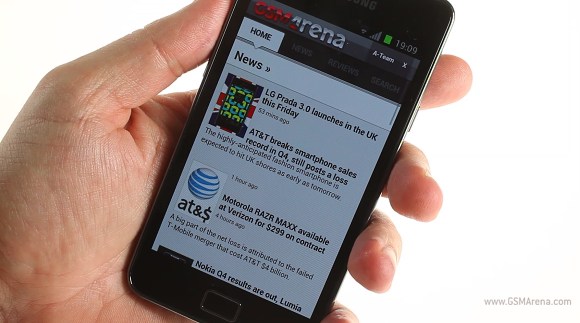


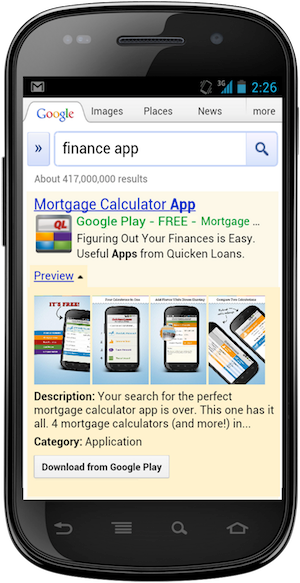
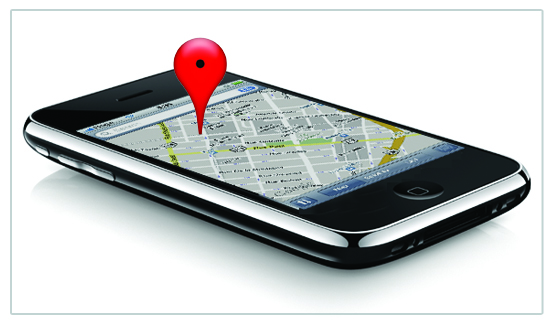
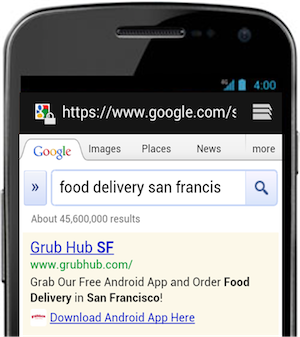
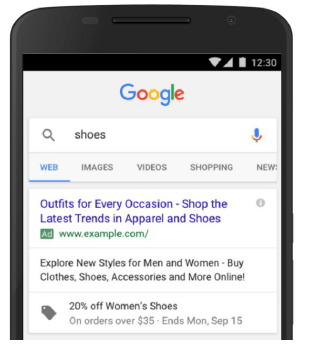
GIPHY App Key not set. Please check settings